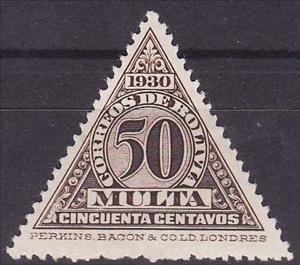Stamp: Drawing numbers (Bolivia 1931)
Drawing numbers (Bolivia 1931)
01 January (Bolivia ) within release Drawing numbers goes into circulation Stamp Drawing numbers face value 50 Bolivian centavo
| Stamp Drawing numbers in catalogues | |
|---|---|
| Michel: | Mi:BO P6 |
| Stamp Number: | Sn:BO J6 |
| Yvert et Tellier: | Yt:BO T6 |
Stamp is square format.
Also in the issue Drawing numbers:
- Stamp - Drawing numbers face value 15;
- Stamp - Drawing numbers face value 40;
- Stamp - Drawing numbers face value 10;
- Stamp - Drawing numbers face value 5;
- Stamp - Drawing numbers face value 30;
- Stamp - Drawing numbers face value 50;
|
Data entry completed
53%
|
|
|---|---|
| Stamp Drawing numbers in digits | |
| Country: | Bolivia |
| Date: | 1931-01-01 |
| Print: | Unknown |
| Perforation: | 14 |
| Emission: | Postage Due |
| Format: | Stamp |
| Face Value: | 50 Bolivian centavo |
Stamp Drawing numbers it reflects the thematic directions:
A number is a mathematical object used to count, measure, and label. The most basic examples are the natural numbers 1, 2, 3, 4, and so forth. Numbers can be represented in language with number words. More universally, individual numbers can be represented by symbols, called numerals; for example, "5" is a numeral that represents the number five. As only a relatively small number of symbols can be memorized, basic numerals are commonly organized in a numeral system, which is an organized way to represent any number. The most common numeral system is the Hindu–Arabic numeral system, which allows for the representation of any non-negative integer using a combination of ten fundamental numeric symbols, called digits. In addition to their use in counting and measuring, numerals are often used for labels (as with telephone numbers), for ordering (as with serial numbers), and for codes (as with ISBNs). In common usage, a numeral is not clearly distinguished from the number that it represents.
The Kionga Triangle (German: Kionga-Dreieck, Portuguese: Triângulo de Quionga) was a small region of German East Africa situated at the mouth of the Ruvuma River. The Ruvuma served as the border between the German colony and Portuguese Mozambique, and the Kionga Triangle was the only section of German East Africa south of the river. Its principal settlement was Kionga (now Quionga ) which had a population of 4,000 in 1910. It became a German possession in 1894 but came under Portuguese control in April 1916 during World War I. The post-war Treaty of Versailles reaffirmed that the river was the border between Tanganyika, then under British control, and Portuguese Mozambique. The triangle was the only territory that the treaty awarded to Portugal.

